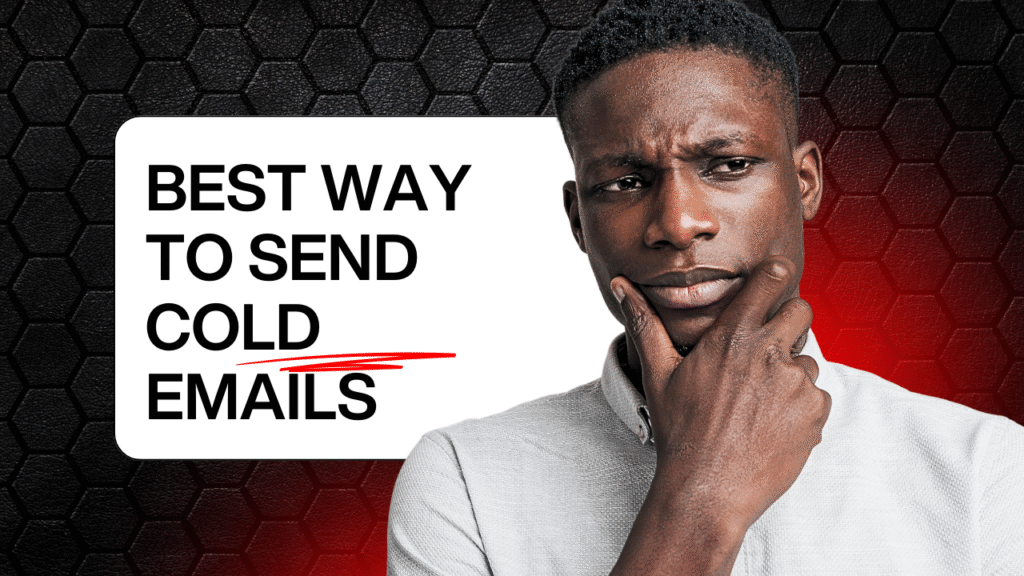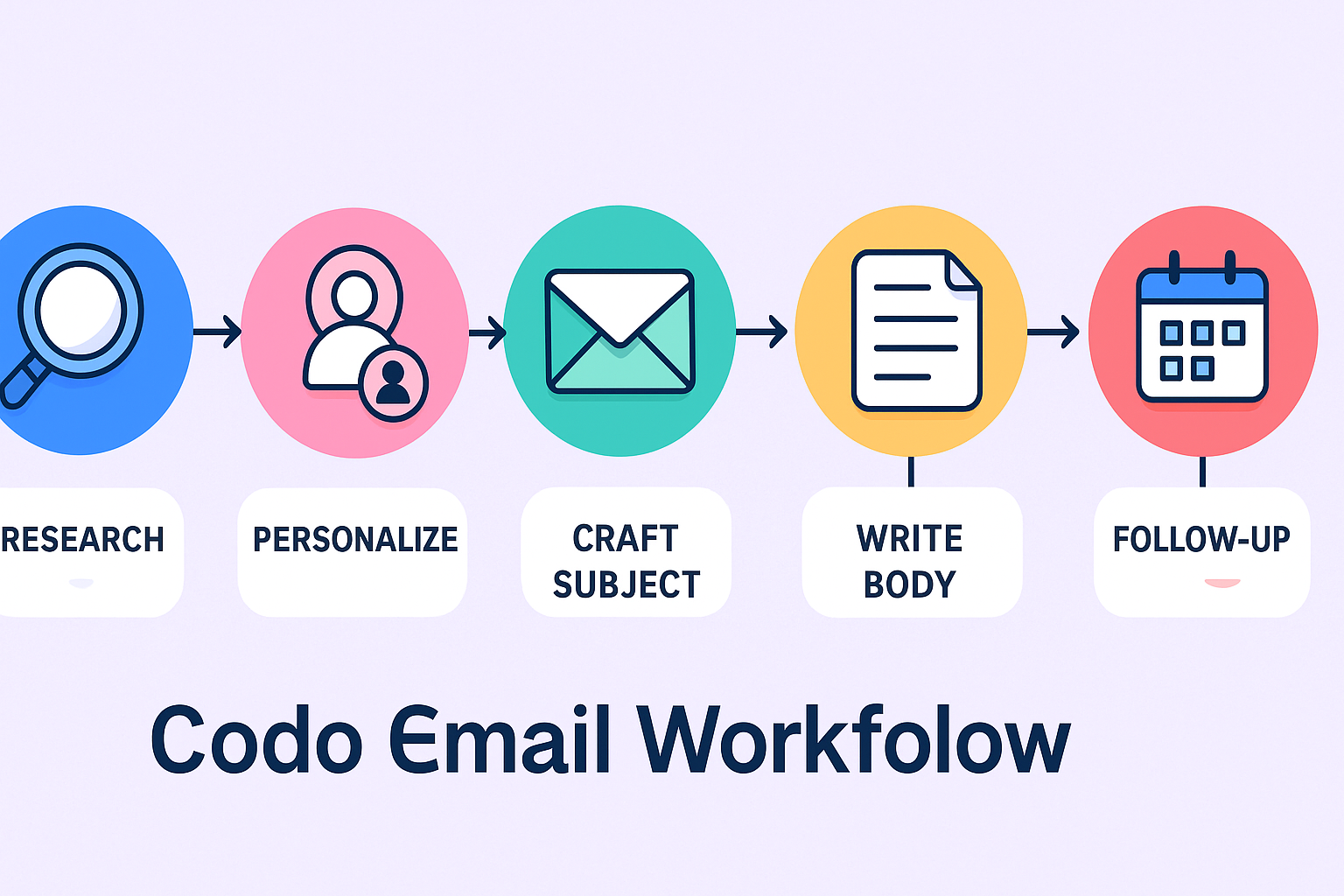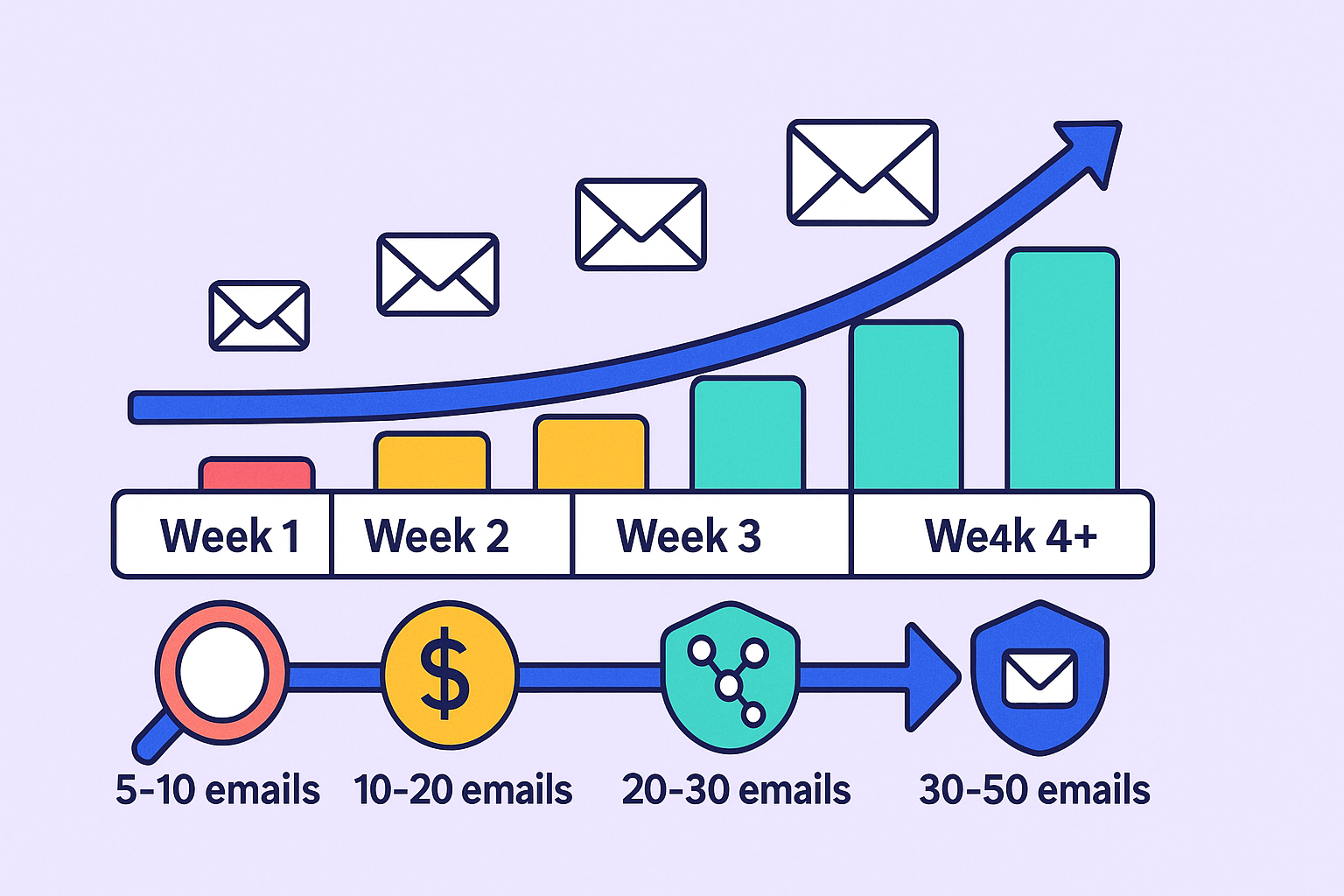- blog
- Cold Emailing
- Best Way to Send Cold Emails – Complete Guide 2025

The Best Way to Send Cold Emails: Your Complete Guide to Success
Table of Contents
Cold emails remain one of the most powerful tools for sales professionals, especially Business Development Representatives (BDRs) and Account Executives (AEs). Despite increasing inbox clutter and evolving anti-spam measures, cold emails are still pretty darn effective in 2025, with top campaigns reaching up to 15% conversion rates.
However, the landscape has become more challenging. Only 23.9% of all sales emails are opened worldwide, and the average cold email reply rate is just 8.5%. But here’s the thing – these statistics don’t mean cold emailing is dead. They mean you need to be smarter about how you approach it.
In this guide, we’ll show you exactly how to send cold emails that not only reach the inbox but actually get responses. Whether you’re new to cold email outreach or looking to improve your existing strategy, this step-by-step playbook will help you turn prospects into conversations.
What are Cold Emails?
A cold email is an unsolicited message sent to someone you’ve never contacted before, typically to start a business conversation. Unlike spam, which is generic and mass-sent, a well-crafted cold email is personalized, relevant, and designed to create genuine value for the recipient.
Cold Email vs. Spam: The Critical Difference
The key difference between cold emails and spam lies in personalization and intent. While spam involves sending the same generic message to thousands of people, effective cold email outreach focuses on:
- Personalization: Each email is tailored to the specific recipient
- Value: The message offers something useful or relevant
- Compliance: Follows legal requirements and includes opt-out options
- Quality over quantity: Focuses on targeted prospects rather than mass blasts
Why Cold Emailing Matters for Sales Teams
For BDRs, cold emailing serves as the foundation of outbound prospecting. It enables you to identify target accounts, research their challenges, and connect with decision-makers at scale. For AEs, it’s a powerful tool for converting qualified leads into revenue-generating opportunities.
Despite the challenges, the widely accepted average across all cold emails is approximately 1% to 5% response rate. However, personalized email content increases average cold email response rates by 32.7%, showing that strategic execution can dramatically improve these numbers.
How To Send Cold Emails
Success in cold email campaigns requires a systematic approach that covers technical setup, message crafting, and list building. Let’s break down each critical component.
Buying Email Accounts & Warm-Up
The foundation of successful cold email outreach starts with proper account setup and warming. This isn’t just a technical detail – it’s what determines whether your emails reach the inbox or get filtered as spam.
Why Email Warm-Up is Essential
Email warm-up is the process of gradually building your sender reputation with email service providers (ESPs) like Gmail and Outlook. Think of it like building trust in a new neighborhood – you don’t throw a huge party on your first day.
Here’s what happens without proper warm-up:
- Your emails land in spam folders
- Your domain gets blacklisted
- Your send reputation gets damaged permanently
During warm-up, you’ll start with low sending volumes and gradually increase while maintaining high engagement rates. This process typically takes 2-8 weeks depending on your target volume.
A Proven Warm-Up Schedule
Here’s a practical warm-up timeline that works:
Week 1: Send 5-10 emails daily to friends/colleagues Week 2: Increase to 10-20 emails daily, ensure high open rates Week 3: Scale to 20-30 emails daily, monitor deliverability closely Week 4-8: Gradually increase to your target volume (typically 30-50 per account)
Pro tip: Throughout the warm-up process, encourage recipients to:
- Open your emails
- Reply to your messages
- Move emails from spam to primary inbox
- Mark your emails as important
Technical Setup Requirements
Before sending any emails, you need these technical foundations:
DKIM, SPF, and DMARC: These email authentication protocols verify that you’re authorized to send emails from your domain. Without them, your emails will likely be flagged as spam.
Secondary domains: For high-volume campaigns, use secondary domains to protect your main business domain. If one gets flagged, your primary domain remains safe.
Infrastructure: For sending over 1,000 emails, consider using 3 mailboxes per domain with a limit of 25 emails per mailbox daily.
Skip The Cold Email Struggle
Our LinkedIn outbound system transforms prospects into warm connections who welcome your messages
Start Sending Emails
Once your technical foundation is solid, it’s time to craft messages that actually get opened and generate responses.
The Power of Personalization
Personalized email content increases average cold email response rates by 32.7%. But personalization goes far beyond adding someone’s first name. Effective personalization includes:
- Recent company news or achievements
- Specific industry challenges they’re facing
- Mutual connections or shared experiences
- Relevant pain points based on their role
Research each prospect thoroughly before writing. Check their LinkedIn profile, company website, recent press releases, and industry publications. The goal is to show you’ve done your homework.
Crafting Subject Lines That Get Opened
33% of people open emails based on the subject line. Your subject line is your first and often only chance to grab attention.
What works:
- Keep it under 50 characters
- Include the prospect’s company name (improves open rates by 22%)
- Ask relevant questions
- Create curiosity without being clickbait
- Use numbers when relevant (subject lines including numbers get approximately 113% more email opens)
Examples that work:
- “Quick question about [Company Name]’s expansion”
- “Thoughts on [Industry Challenge]?”
- “5-minute solution for [Specific Problem]”
Writing Email Bodies That Convert
Emails with 20 lines of text have the highest click-through rates, but the key is quality over quantity. Cold emails between 50-125 words show response rates exceeding 50%.
Structure that works:
- Personal opener (reference their recent achievement/news)
- Problem identification (pain point they’re likely facing)
- Value proposition (how you can help)
- Single clear call-to-action (one specific next step)
- Professional signature
Keep 95% of your email focused on them, not you. Use simple language and avoid industry jargon.
The Art of Follow-Ups
Most sales don’t happen on the first email. Even if your first email goes unanswered, you still have a 21% chance of getting a reply with a follow-up.
However, timing matters. The third email in the thread (aka second follow-up) brought 20% fewer responses in 2024, and by the time you hit follow-up #4 (your fifth email), response rates drop off a cliff, down 55%.
Optimal follow-up strategy:
- Email 1: Initial outreach
- Email 2: Send after 3-5 days (highest ROI follow-up)
- Email 3: Wait 7 days, provide additional value
- Email 4+: Consider multi-channel approach (LinkedIn, phone)
Best Time to Send Cold Emails
Timing can make or break your campaign. Based on recent data:
Best days: Tuesday is often considered the best day to send cold emails, with Tuesday and Thursday are the best days in a week to send cold emails
Best times: The best time to send a cold email is between 5 AM and 8 AM on Monday, where cold emails get an average reply rate of 2.3%. The best time to send cold emails is between 4 AM to 8 AM, with the highest open rate observed from 4:00 to 8:00 AM at 42.7%.
Time zone considerations: Always send emails according to the recipient’s local time zone for maximum impact.
📧 Ready For Guaranteed Email Success?
LinkedIn relationship building achieves 40% response rates while cold emails struggle at 8.5%
Make Email Lists
Even the most compelling cold email pitch falls flat if sent to the wrong people. Building a targeted, high-quality email list is absolutely crucial for cold email campaign success.
Define Your Ideal Customer Profile (ICP)
Before building any list, you need crystal-clear criteria for your ideal prospects:
- Job titles: Decision-makers and influencers in your target area
- Company size: Revenue, employee count, funding stage
- Industry: Specific verticals where your solution works best
- Geography: Regions you can effectively serve
- Pain points: Specific challenges your solution addresses
For more detailed guidance, check out our comprehensive guide on how to create ICP templates.
Smart List Building Strategies
Manual research: Start with company websites and LinkedIn to identify decision-makers. Use LinkedIn Sales Navigator’s advanced search features to find prospects that match your ICP.
Lead generation tools: Platforms like Apollo.io, ZoomInfo, and other databases can accelerate list building. Many cold email software solutions include integrated lead finders with millions of verified contacts.
Networking and referrals: Ask existing customers and connections for introductions to similar companies.
List Hygiene Best Practices
On average, approximately 7-8% of cold emails result in bounces – much higher than opt-in email marketing. Poor list quality is a major contributor to these high bounce rates.
Essential list hygiene practices:
- Email verification: Use tools to validate email addresses before sending
- Remove duplicates: Clean your list of duplicate contacts
- Update regularly: Remove bounced emails and unsubscribes immediately
- Segment properly: Group contacts by industry, role, or company size for targeted messaging
A clean, verified list isn’t just about efficiency – it’s about protecting your sender reputation. High bounce rates can permanently damage your ability to reach any inbox.
Legal Compliance
Ensure your cold email outreach complies with relevant regulations:
CAN-SPAM Act (US): Requires accurate sender information and easy opt-out options GDPR (EU): Stricter requirements, often needs legitimate interest or consent CCPA (California): Additional privacy protections for California residents
Always include an unsubscribe link and honor opt-out requests immediately.
For insights on email deliverability best practices, read our guide on email bounce back solutions.
📊 Beyond Cold Email Optimization
Systematic LinkedIn outbound eliminates cold email complexity by building authority prospects already trust
7-day Free Trial |No Credit Card Needed.
Frequently Asked Questions
How long should a cold email be?
Q: How many follow-up emails should I send?
Q: What's a good response rate for cold emails?
Q: Should I use tracking pixels in my cold emails?
Q: Should I use tracking pixels in my cold emails?
Q: Can I send cold emails legally?
Conclusion
The best way to send cold emails in 2025 requires a strategic combination of technical excellence and compelling messaging. Success comes down to these core principles:
Foundation first: Proper email warm-up and technical setup are non-negotiable for deliverability.
Personalization wins: Personalized email content increases average cold email response rates by 32.7%. Generic messages simply don’t work anymore.
Quality over quantity: Focus on highly targeted lists and well-crafted messages rather than mass blasting.
Strategic follow-up: Use follow-up sequences intelligently, but know when to stop to avoid spam complaints.
Timing matters: Send emails when your prospects are most likely to engage – typically Tuesday-Thursday between 4-8 AM in their time zone.
Continuous optimization: Test different approaches and refine based on your results.
The cold email landscape continues evolving, but the fundamentals remain: provide genuine value, respect your prospects’ time, and focus on building real relationships. By following this playbook and continuously refining your approach, you’ll not only improve your response rates but also build a sustainable pipeline of qualified opportunities.
Remember, cold email outreach isn’t just about sending messages – it’s about starting conversations that lead to meaningful business relationships. Master these techniques, and you’ll turn cold prospects into warm conversations and, ultimately, closed deals.

Stop Perfecting Cold Email Tactics
LinkedIn outbound builds relationships that make recipients eager to respond regardless of email optimization
